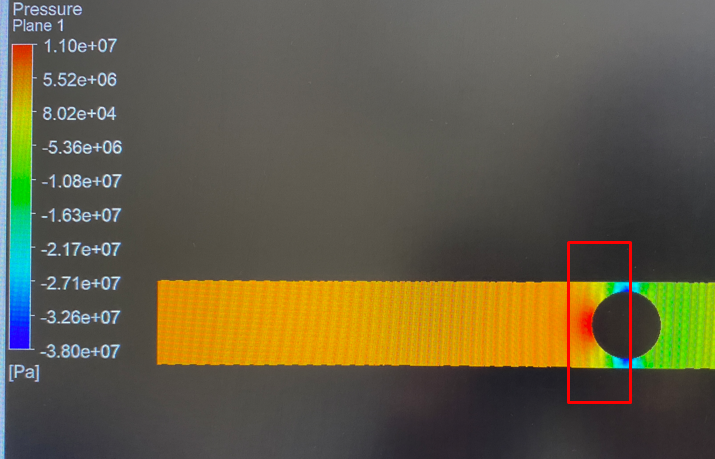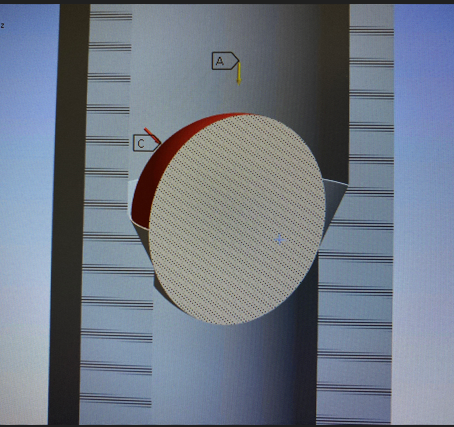-
-
October 7, 2024 at 4:57 pm
javat33489
SubscriberHello everyone.
The task is to determine water hammer. With what force will the water hit the ball on the seat.Water is supplied to the well (pipe), in front of the water there is a steel ball, the water will move the ball strongly until it hits its seat. It is necessary to understand with what force the impact will be, whether it will deform the seat:
In which module is it easiest to do this? It is necessary to take into account the density of the liquid. Is it possible to do this in static or transient analysis? Or only fluent? Tell me a brief sequence of actions and then I will figure it out. Thank you.
-
October 8, 2024 at 8:59 am
Rob
Forum ModeratorWhat is the definition of force? Think back to fundamentals.
-
October 8, 2024 at 4:33 pm
javat33489
SubscriberSir, what are you getting at?
-
-
October 9, 2024 at 8:50 am
Rob
Forum ModeratorWhat is force? Ie what are the units, if you break them down.
-
October 9, 2024 at 5:13 pm
javat33489
Subscriberah sir i got it this is force in newtons
-
October 9, 2024 at 5:47 pm
javat33489
SubscriberSir I need to understand with what force the ball will hit the saddle
-
-
October 10, 2024 at 10:51 am
Rob
Forum ModeratorYes, and the pressure will determine the ball speed (and if there's any fluid cushion) as it hits.
-
October 10, 2024 at 5:01 pm
javat33489
SubscriberThe liquid cushion can be ignored.
Are you suggesting to calculate the ball speed by pressure and use static analysis?
-
-
October 11, 2024 at 8:31 am
Rob
Forum ModeratorIt's a good start - always do a hand calc before using simulation tools. If the force can't be contained why run a model to show how badly it fails?
-
October 12, 2024 at 11:26 am
javat33489
SubscriberSir, I didn’t understand you. Please write in more detail how to approach this task in ANSYS now?
-
-
October 14, 2024 at 10:37 am
Rob
Forum ModeratorIf you can ignore the cushioning then Mechanical may be a good choice.
-
October 17, 2024 at 6:16 pm
javat33489
SubscriberI think that density has an effect.
Tell me your version, how would you calculate this problem?
-
-
October 18, 2024 at 8:54 am
Rob
Forum ModeratorI'd look at Fluent 6DOF if fluid was important and then pass the speed/force over to Mechanical (or rather I'd get one of our Mech staff to do that bit).
-
May 16, 2025 at 5:16 pm
javat33489
SubscriberSir, thank you for your reply. Can you please elaborate? I did not understand you.
-
-
May 19, 2025 at 8:29 am
Rob
Forum Moderator6DOF does motion (1DOF may be sufficient) and impacts may need Mechanical. Read the limitiations for contact in Fluent.
-
May 19, 2025 at 3:53 pm
javat33489
SubscriberSir, that's clear. BUT how to do all this?
-
May 19, 2025 at 3:56 pm
-
-
May 19, 2025 at 4:18 pm
Rob
Forum ModeratorIf that's the free stream pressure with space for flow around it, is that the same as when you close up the flow?
As for how, review the model options and look in both the tutorials (Help) and Learning.
-
May 19, 2025 at 4:27 pm
javat33489
SubscriberSir, I didn't understand you(
-
-
May 19, 2025 at 7:36 pm
Rob
Forum ModeratorIf water is flow around the ball is that the same as the condition with no flow?
-
May 20, 2025 at 4:03 pm
javat33489
Subscriberno sir, because the ball moves with the flow.
Sir, I understood that I need to bring the ball with the help of 6DOF. I will do it.
But how to measure the voltage on the ball and the saddle when the ball rests on the saddle?
-
-
May 20, 2025 at 5:11 pm
Rob
Forum ModeratorIf the ball rests on the saddle it's not moving, and it's in contact: neither are going to need CFD, and one is not permitted by the 6DOF model.
-
May 20, 2025 at 7:14 pm
javat33489
SubscriberMy task is a ball that moves towards a saddle and then hits it.
-
-
May 21, 2025 at 9:05 am
Rob
Forum ModeratorWhich comes back to the original points: you need to understand what Fluent can offer in this regard with the 6DOF solver and what the limitations are.
-
May 21, 2025 at 5:23 pm
javat33489
SubscriberSir I know that maybe DOF will do its job and bring the ball to the seat. But I need to understand how the seat and the ball will be damaged by the impact.
-
-
May 29, 2025 at 9:12 am
Rob
Forum ModeratorWhich again brings us back to understanding the limitations of moving mesh in Fluent. And then working out what data to transfer to Mechanical or Dyna to solve the contact problem.
-
- You must be logged in to reply to this topic.



-
4633
-
1540
-
1386
-
1225
-
1021

© 2025 Copyright ANSYS, Inc. All rights reserved.










